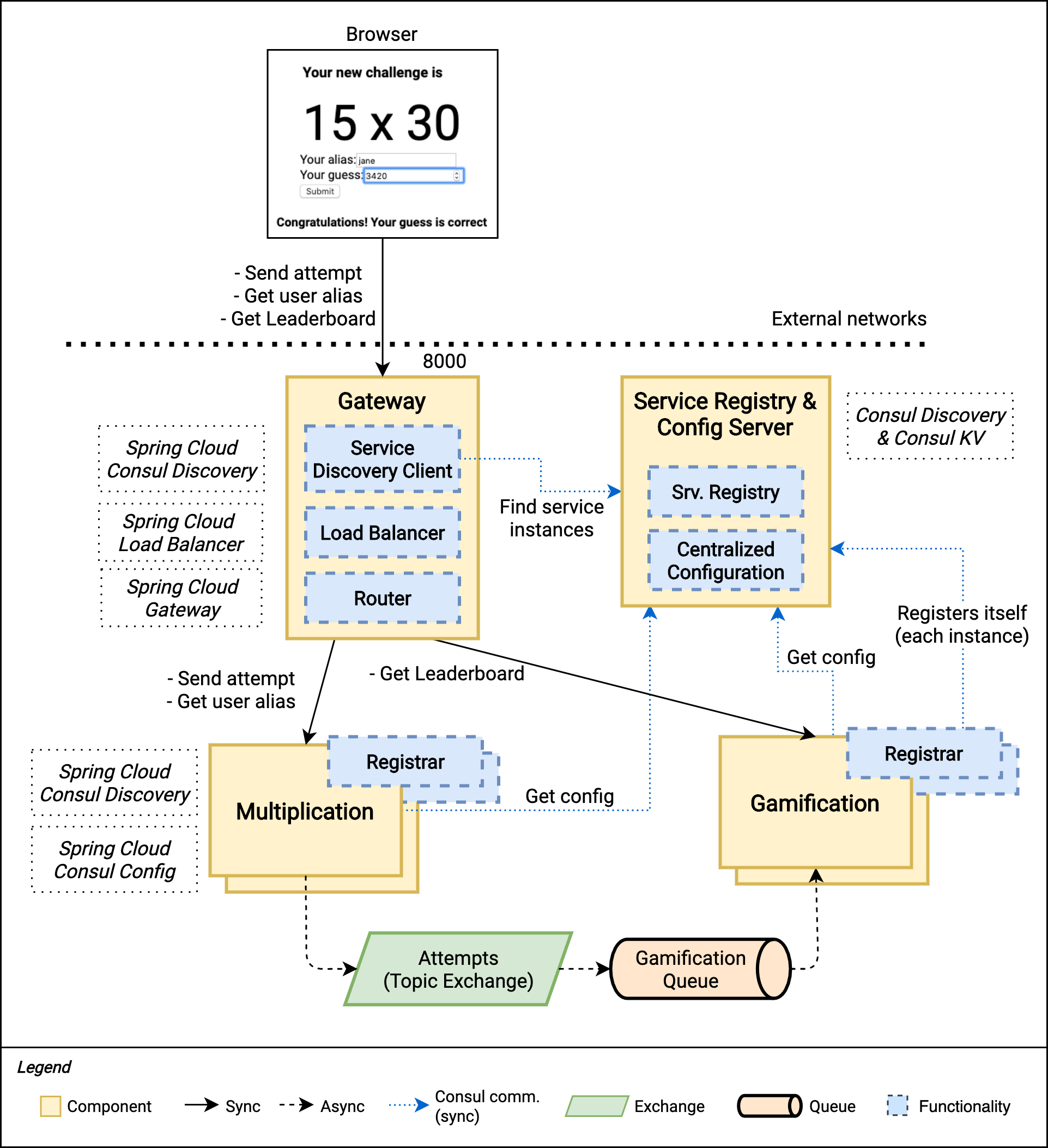This repository contains the source code of the practical use case described in the book Learn Microservices with Spring Boot 3 (3rd Edition). The book follows a pragmatic approach to building a Microservice Architecture. You start with a small monolith and examine the pros and cons that come with a move to microservices.
The Chapter 8's source code is divided into four parts for a better understanding of how the system evolves when we start introducing Common Patterns in Microservice Architectures.
In this third part, we introduce Centralized Configuration, supported by Consul KV. This pattern allows us to keep a different configuration for our microservices per environment.
The main concepts included in this first part of the chapter are:
- Why do we need a Configuration Server?
- Consul KV and its integration in Spring Boot via Spring Cloud Consul Configuration.
- Creating profile combinations in Consul KV.
- Trying out the configuration server in our system.
As usual, the book follows a hands-on approach, so you learn everything based on this microservice case study.
Requirements:
- JDK 17
- Node.js v18.16.0
- npm 9.7.1
- RabbitMQ 3.12.2
- Consul 1.16.0
- You need a RabbitMQ server running. Run the server according to the instructions for your OS, for example:
$ rabbitmq-server
- You also need Consul up and running (in development mode). Follow the instructions for your OS, for example:
$ consul agent -node=learnmicro -dev
- To start the Multiplication microservice, you can use the command line with the included Maven wrapper:
multiplication$ ./mvnw spring-boot:run
- To start the Gamification microservice, you do the same from its corresponding folder:
gamification$ ./mvnw spring-boot:run
- To start the Gateway microservice, you do the same from its corresponding folder:
gateway$ ./mvnw spring-boot:run
- The React application can be started with npm. First, you need to download the dependencies with:
challenges-frontend$ npm install
- Then, you start the server with:
challenges-frontend$ npm start
Note:
In the final version of our code, we use Docker to start our complete system easily. However, it's not yet introduced at this point in the book, so we're starting all these components manually.
Once the backend and the fronted are started, you can navigate to http://localhost:3000 in your browser and start resolving multiplication challenges.
- Do you have questions about how to make this application work?
- Did you get the book and have questions about any concept explained within this chapter?
- Have you found issues using updated dependencies?
Don't hesitate to create an issue in this repository and post your question/problem there.
You can buy the book online from these stores:
